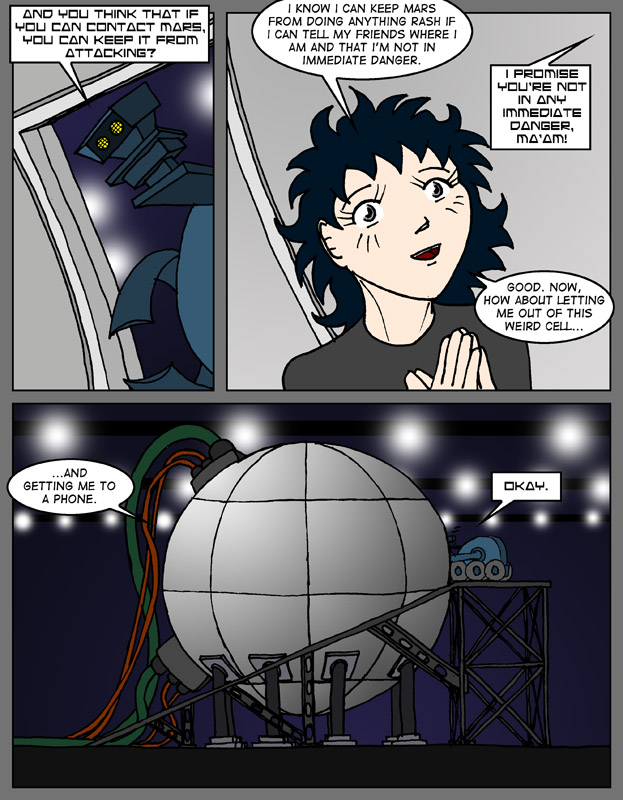
| ||
|
(Jon sez:)  As I write this, I'm listening in the background to the end of a PBS documentary on the DARPA Grand Challenge.
As I write this, I'm listening in the background to the end of a PBS documentary on the DARPA Grand Challenge.
It strikes me as perhaps obvious in retrospect that successful large-scale mobile robots have been built into automobiles. It makes no sense to create a mobile platform de novo when we've spent the last century attempting to perfect a machine which can move overland easily. It runs on a fluid that you can buy pretty much anywhere, and just about everyone knows how to use it. Plus, it can be repaired with parts you can buy at the local car parts store. (Well, other than the robotics themselves. Those might involve a trip to Radio Shack.) The documentary which will be broadcast next week is about the lander which touched down on Saturn's moon Titan last year. I love living in the future. |
(Mark sez:)  Previously I threw you a link to the Logarithmic Map of the Universe. The scientific paper associated with it is rather fascinating reading, as the authors point out the challenges of attempting to render something as large as the, you know, universe and retain meaningful levels of detail. They were inspired, at least in part, by the famous New Yorker's Map of the World and approached the challenge by using a logarithmic scale -- as you go from the bottom of the map to the top all distances and sizes are continually multiplied by a common factor. Simple enough, but it means everything in the universe can be crowded onto the map in some rough relationship to how much we actually know about it.
Previously I threw you a link to the Logarithmic Map of the Universe. The scientific paper associated with it is rather fascinating reading, as the authors point out the challenges of attempting to render something as large as the, you know, universe and retain meaningful levels of detail. They were inspired, at least in part, by the famous New Yorker's Map of the World and approached the challenge by using a logarithmic scale -- as you go from the bottom of the map to the top all distances and sizes are continually multiplied by a common factor. Simple enough, but it means everything in the universe can be crowded onto the map in some rough relationship to how much we actually know about it.
Many objects we've mentioned here in the MoS columns appear on the map: Kuiper belt objects such as Pluto, Sedna, Quaoar, and 2003 UB313, distant gravitationally lensed planetary systems such as OGLE 2003-BLG-235, and of course the always popular cosmic microwave background radiation. Other famous objects such as the Great Attractor and the bright quasar 3C273 are highlighted as well. The foamlike structure of galactic superclusters is obvious as well between 100 and 1000 megaparsecs. All in all, for any astronomy nerd it's just too cool for school. |
|